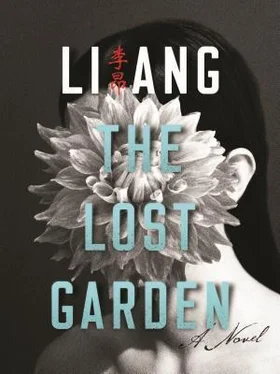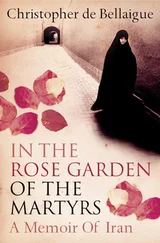“You won’t make the same mistake next time,” she said quietly. “Ayako needs to learn to do housework. If you’re lucky, you may not need to do it yourself, but you should know how. That way, your servants won’t try to show you up, and you’ll have the authority over them. Understand?”
Yinghong nodded quietly and looked down at her hands.
She had small hands. A young girl in the process of turning into a woman, she still had the hands of a child. As she never had to do heavy work, her knuckles kept their size and shape and her hands remained soft and smooth. Even after she’d grown up, her hands remained the picture of “boneless soft.”
On that afternoon, as they prepared the sacrifice, she looked down at her fair, slender hands and, with full knowledge that she was the favorite child, asked her mother in a childish voice:
“Okasan, can there be women who never have to do housework throughout their lives?” She paused and thought before continuing, “Or will there be people like Mudan, who do all the work for them?”
“Ayako,” Mother fixed her gaze on her. “Life goes on for a long time, and you should never say anything with such certainty. No one knows what will happen in the future. You could live in a big house or a tall building one day, and have nothing left the next.”
There was a hint of sorrow in her voice. At home, they followed Father’s dictate to use only Taiwanese or Japanese. Mother spoke Japanese in a gentle, clear voice, and, with the usual “a,” “na,” “ni,” “ye,” and “hai,” sounded tender and charming in the Tokyo accent prized by those who knew Japanese well. So at the moment, she seemed to be whispering a delicate sense of sorrow.
On that afternoon, she was surprised to hear a different tone in her mother’s voice, so Yinghong snapped her head up to look at her. The face must have displayed that sorrow, with a subtle frown and lowered eyes, but when Yinghong looked up, her mother was already returning to her usual bright, warm self, the frown replaced by a smile at the corners of her mouth.
It was past noon, and Mother had been busy all morning. She had combed her hair and tucked it behind her ears before wrapping her head in a dark blue triangular head scarf sprinkled with small flowers, not a single strand going astray. The loose dress she wore around the house was neat and spotless. Her face showed a tinge of red, from the busy work and the heat from the stove, but mother had maintained her composure and proper demeanor even at a busy time like this; she had quickly recovered from the sorrowful look when Yinghong scrutinized her face. All this proved unusual to Yinghong, who couldn’t stop staring at her mother as if in a trance.
“Let’s go see how the sacrificial table is coming along,” Mother suggested calmly.
In Yinghong’s recollections, her mother had always looked gentle and reserved, rarely showing emotion, during all those years she was in elementary school and even when Father was laid up in bed.

Her middle school summer uniform consisted of a white short-sleeve blouse and a black pleated skirt. The collar of the blouse was what Mother called a “komika collar,” with pointed tips turning outward, while the skirt was made of coarse black cotton with inch-wide pleats created by tailoring and ironing. It required vigilance and constant ironing to maintain the pleats; otherwise, the hems would lose the pleat lines and spread out, like a puffy skirt.
When she wore the black skirt, Mother was adamant that she mustn’t let the hem roll like waves when she walked. When she sat, she was to gather the pleats first, and mustn’t shift her body too freely. That was the only way to keep the shape of the skirt after a day at school. After she took it off upon returning home, Mudan would hang it up immediately.
At night when Mudan finished all the household chores, she would take the skirt back to her own room, where she removed the straw mat and, after carefully gathering the pleats, place the skirt on the wooden bed planks. Then she’d replace the mat and lie down to sleep on it. The following day, when she got up, the pleats would be nice and sharp, as if ironed, each and every pleat retaining its shape.
“I want Ah-hong to be the best student on campus with the neatest uniform,” Mudan said proudly.
It was an interesting novelty to discover that lying down to sleep helped preserve the pleats in her skirt, so Yinghong asked Mudan to let her try it. Imagine her surprise when Mudan pointed and mocked her with a hearty laugh:
“You’re such a little unruly monkey! I’ve slept next to you before and, boy, you squirm like a fat worm all night long. If you slept on your skirt, you’d never be able to find it the next morning, let alone keep the pleats.”
This effectively shut Yinghong up, since she could recall how Mudan could go to sleep in one position and wake up in the same one the next morning, not moving an inch.
The school had requirements for the winter uniform also, which included long pants, a jacket, and long-sleeve shirts. In addition, she came into possession of a few “chemises,” which, according to her mother, meant underwear.
Sleeveless and collarless, the chemises were long enough to reach the knees, though shorter than her uniform black skirt. They were usually made of fine linen, with a slight curve around the waist. Mother instructed her to put the chemise on before her school uniform.
Her first day of middle school was in September, when it was still hot. Upon returning home, she immediately took off the uniform and unbuckled her Girl Scout belt, and, wearing only the chemise, was eager to go to Flowing Pillow Pavilion to tell Father what had happened at school that day. The moment she stepped out of her room, she ran into her mother, who said:
“You’re not a little girl anymore and you can’t run around in your chemise. Go put something over it.”
Yinghong lowered her head. The sleeveless and collarless chemise exposed her skinny arms and bony shoulders. On the slender, flat body of an undeveloped twelve-year-old, she sensed the signs of femininity, which made her blush, and quickly went back inside to put on the dress she wore around the house.
Mother had her own chemises, and she never wore them outside. Yinghong liked to rummage through Mother’s stuff. The drawers in the black-lacquered armoire painted green, light brown, and vermillion were filled with her mother’s chemises. They were made of different fabrics — satin, silk, and poplin — all in white, but in different shades. With the satin, it was a bright milky white with a high sheen; the silk ones had a hint of beige, a light yellow showing through the white, and the poplin ones were a clean white, light and airy.
The chemises had layers of lace edging at the hems, the slits, and the necklines. Sleeveless and collarless, they had shoulder straps made of thin strips of horizontal fabric or lace, which were exquisitely embroidered with fine eyelets to hold up the low-cut, V-neck satin, silk, or poplin chemises, with or without a curved waist.
Yinghong liked to bury her face in the drawerful of chemises. The cool, fine fabrics always made her shudder when they touched her skin, as if brushed by a light breeze, accompanied by a subtle, nearly imperceptible fragrance. When she was older, she learned that that came from the empty perfume bottles her mother placed in the drawer, not from the chemises themselves.
Yet she’d never seen her mother in any of those gorgeous chemises. As a middle school girl, she didn’t dare ask her mother about them, for she knew Mother would be unhappy with her if she learned that Yinghong rummaged through her drawers. Besides, she wanted to savor the pleasure of these wondrous pieces by herself. It wasn’t until she was about to leave for college in Japan that she asked her mother in a feigned casual tone in one of their conversations. Why had she never seen her wearing those fancy chemises?
Читать дальше













